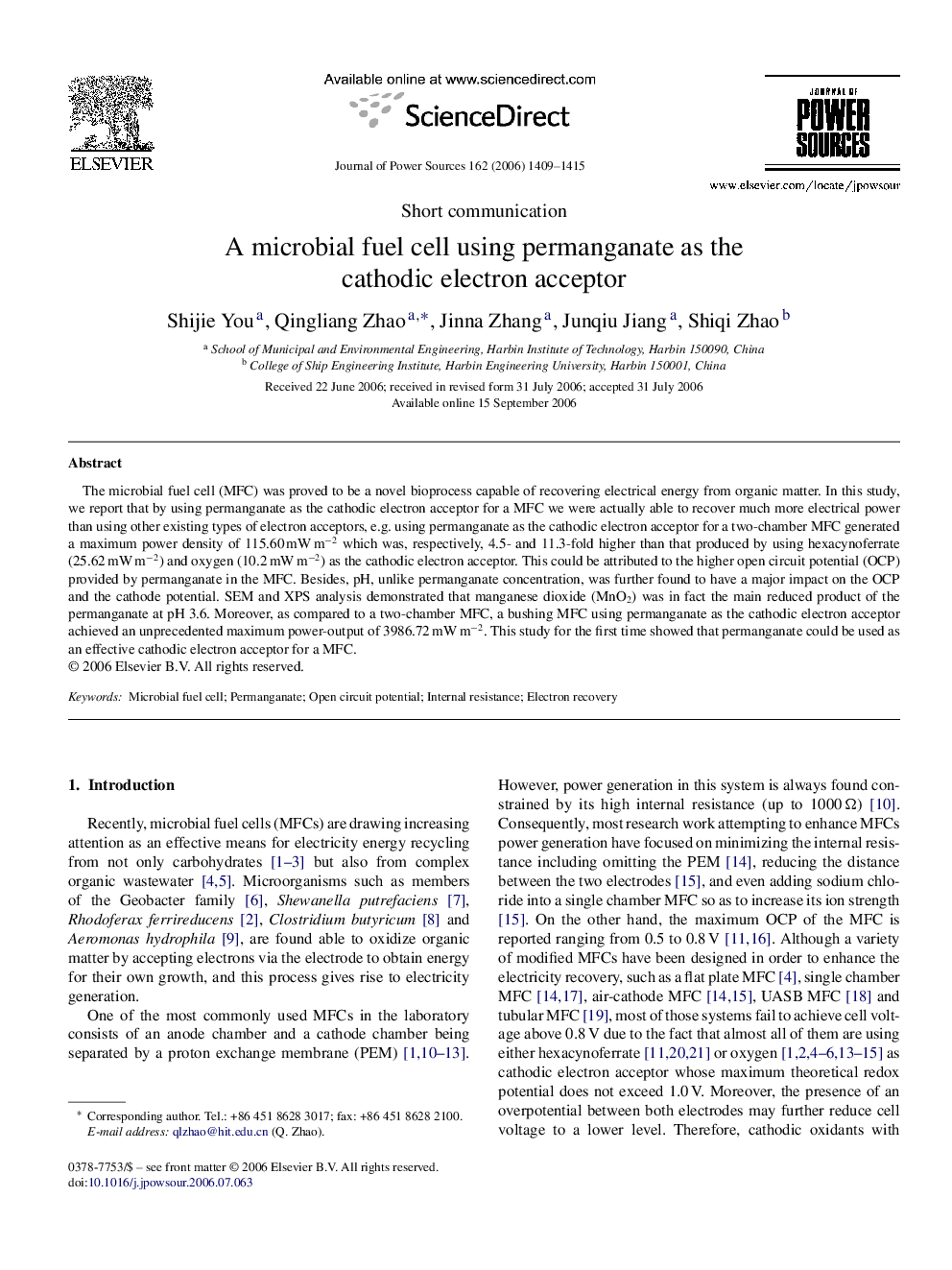| Article ID | Journal | Published Year | Pages | File Type |
|---|---|---|---|---|
| 1292523 | Journal of Power Sources | 2006 | 7 Pages |
The microbial fuel cell (MFC) was proved to be a novel bioprocess capable of recovering electrical energy from organic matter. In this study, we report that by using permanganate as the cathodic electron acceptor for a MFC we were actually able to recover much more electrical power than using other existing types of electron acceptors, e.g. using permanganate as the cathodic electron acceptor for a two-chamber MFC generated a maximum power density of 115.60 mW m−2 which was, respectively, 4.5- and 11.3-fold higher than that produced by using hexacynoferrate (25.62 mW m−2) and oxygen (10.2 mW m−2) as the cathodic electron acceptor. This could be attributed to the higher open circuit potential (OCP) provided by permanganate in the MFC. Besides, pH, unlike permanganate concentration, was further found to have a major impact on the OCP and the cathode potential. SEM and XPS analysis demonstrated that manganese dioxide (MnO2) was in fact the main reduced product of the permanganate at pH 3.6. Moreover, as compared to a two-chamber MFC, a bushing MFC using permanganate as the cathodic electron acceptor achieved an unprecedented maximum power-output of 3986.72 mW m−2. This study for the first time showed that permanganate could be used as an effective cathodic electron acceptor for a MFC.
